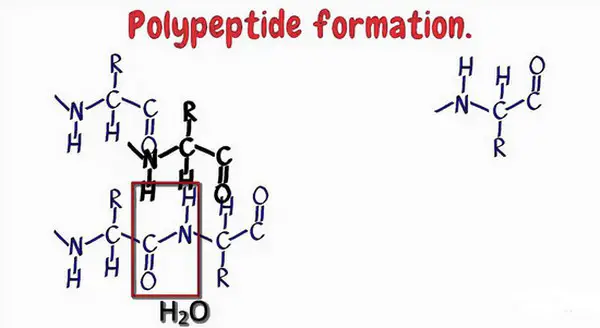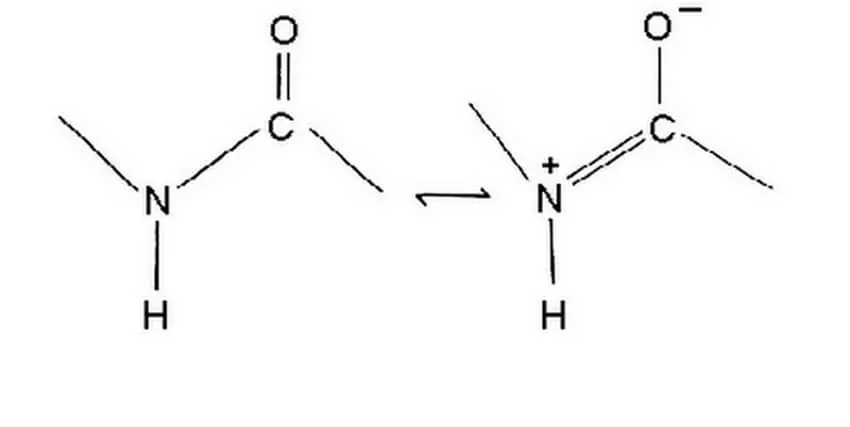What are Polypeptides?

Picture 1 :Polypeptide molecules made up proteins.
Image Source: biology-pages.info

Picture 2: The diagram shows how a polypeptide is formed.
Image Source: ytimg.com
They are chains of amino acids, which are linked by peptide bonds. Every end of polypeptide is called amino terminal or N terminal, which has a free amino group. The other end of polypeptide has a free carboxyl group called C terminal or carboxyl terminal. Polypeptides play an important part of proteins in the cells.
Proteins consist of one or more molecules of polypeptides. Proteins are important as they help the cells in various ways. As a matter of fact, half of the mass of the cell is made up of protein.
It also supports the cell structure and stores important substances. It also controls metabolic functions and improves the immune response of the cells.
Polypeptides make proteins by bonding together various amino acids. Two or more polypeptides bond and fold into a specific shape to form a particular protein.
The other name for polypeptide is an amino acid polymer. They are chains of monomers and subunits linked together by a chemical bond. A single chain of a polypeptide is called simple protein. Examples of polypeptides are insulin and growth hormone. (1, 2, 3, 4, and 5)

Picture 3: The image shows the peptide bond.
Image Source: cryst.bbk.ac.uk

Picture 4: The image shows the different peptide structures.
Image Source: easylifescienceworld.com

Picture 5: The image shows the polypeptide chains.
Image Source: slidesharecdn.com
Polypeptide Structure
Polypeptides have four levels of structure and they are the following:
Primary structure
The primary structure is the sequence of amino acid in the polypeptide chain in line with the location of disulfide bonds. To take note of the primary structure of the polypeptide, you should write the amino acid sequence with the use of three letter abbreviations for amino acids.
Secondary structure
It pertains to the ordered arrangement of amino acids in the localized location of the polypeptide. The folding pattern is stabilized with the help of hydrogen bonds.
The two secondary structures are alpha helix and anti-parallel beta-pleated sheet. Periodic confirmations are vast but the two mentioned above are the most stable.
- α-helix – It is a right-handed spiral wherein every peptide bond is in the trans conformation.
- β-pleated sheet – It has extended polypeptide chain with a nearby chain that extends anti-parallel to each other. Every β-pleated sheet is trans and planar. A hydrogen bond may occur between the nearby polypeptide chains.
Tertiary structure
The tertiary structure has three dimensional atom arrangement in a single polypeptide chain. The tertiary structure is maintained by disulfide bonds; which are formed between the side chains of cysteine.
It is formed through the oxidation of two thiol groups thereby forming a disulfide bond.
Quaternary structure
it is a term used to describe proteins consists of multiple polypeptide molecules. Each polypeptide molecule is called monomer.
Usually, proteins that have greater than 50,000 molecular weight have two or more noncovalently-linked monomers.
It is called quaternary structure because the arrangement of monomers in three-dimensional protein is in quaternary style. A perfect example is the hemoglobin protein.
Hemoglobin has four monomers which two α-chains each containing 141 amino acids and two β-chains and each contains 146 amino acids. (4, 5, 6, and 7)
What are the Functions of polypeptides?
Polypeptides have various important functions and their function is dependent on their size and amino acid sequence.
Some of the notable functions of polypeptides are the following:
- Transporter – They act as transporters which selectively enable some substances to pass into the cell through its permeable membrane. A perfect example is the glucose transporter. What it does is it allows the glucose to travel from the blood and into other cells which will then be used by the body as an energy source.
- Enzymes – What are enzymes? They are a biologic catalyst that hastens the metabolic functions of the body. Polypeptides speed up the reaction in various bodily functions such as digesting foods, energy production, and cellular component synthesis.
- Hormones – They act as messengers that carry information from one tissue to another through the blood. Examples are insulin, glucagon, leptin, and ghrelin.
- Structure – Polypeptides function as structural elements of the body. Some of them are vital components of the muscles and bones. (7, 8, 9, and 10)
References
- http://www.biology-pages.info/P/Polypeptides.html
- https://en.wikipedia.org/wiki/Peptide
- https://study.com/academy/lesson/polypeptide-definition-formation-structure.html
- https://www.medicinenet.com/script/main/art.asp?articlekey=7766
- http://www.chm.bris.ac.uk/webprojects2001/hoyle/page4.htm
- https://www.sciencedirect.com/topics/chemistry/polypeptide
- https://www.thoughtco.com/protein-and-polypeptide-structure-603880
- https://www.quora.com/What-is-polypeptide
- https://bio.libretexts.org/TextMaps/Microbiology/Book%3A_Microbiology_(Kaiser)/Unit_7%3A_Microbial_Genetics_and_Microbial_Metabolism/19%3A_Review_of_Molecular_Genetics/19.1%3A_Polypeptides_and_Proteins
- http://www.differencebetween.net/science/difference-between-polypeptide-and-protein/
